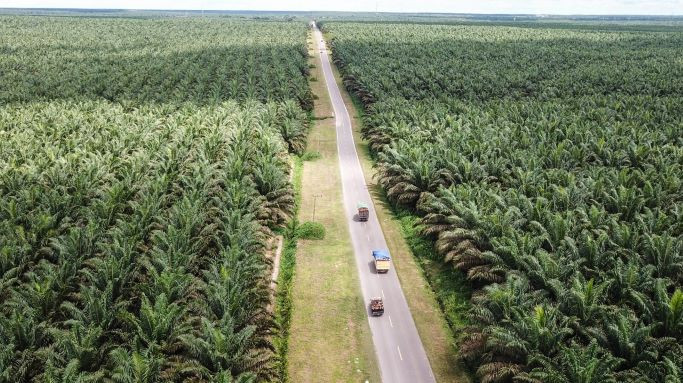Popular Reads
Top Results
Can't find what you're looking for?
View all search resultsPopular Reads
Top Results
Can't find what you're looking for?
View all search resultsRethinking industrial wastewater treatments to boost Indonesia’s water security
According to the World Bank, 95 percent of Indonesia’s wastewater flows into agricultural fields, rivers, and open drains.
Change text size
Gift Premium Articles
to Anyone
I
ndonesia, Southeast Asia’s largest economy, has been on an upward trajectory and shall attract significant manufacturing and technology investments over the next few years. With this industrial boom, one can only anticipate the massive volumes of water consumption that the country will soon face.
Water demand is continuing to rise quickly as a result of demographic and economic growth and is expected to increase by 31 percent between 2015 and 2045. In contrast, water availability largely lags behind the total water demand. The total water availability in Indonesia is 690 × 109 cubic meters (m3 ) per year, which is a lot more than the demand of 175 × 109 m3/year. Water stress is a rising concern for many islands, especially the high-density areas like Java.
Experts have suggested how water security underpins Indonesia’s Vision 2025. So what are the water challenges as the nation chases this vision? Overuse, wastage, pollution, to name a few.
Indonesia’s water resources accounts for 6 percent of the world’s and 21 percent of Asia-Pacific’s. But more than half of Indonesia’s rivers are heavily polluted. Of those, 70 percent are polluted by domestic waste, according to the Indonesian National Planning Agency.
A report, Indonesia Vision 2045: Towards Water Security, by Indonesia’s National Development Planning Agency (Bappenas) and the World Bank, reveals that with the lack of dedicated action on water security, the country will lag behind its Vision 2045 GDP target by up to 7.3 percent. This is quite alarming.
Water security in the broader Asia Pacific region is similarly a key issue which is yet to get the spotlight it deserves. Combined with the increasing rate of urbanization, water demand is expected to rise by approximately 55 percent by 2030. This estimated increase would result in a 40 percent discrepancy between the supply and demand of water resources in the region.
The archipelago nation, though, is distinctive on the map and enriched with abundant natural resources. As the world’s largest producer of palm oil and nickel and a leading source of copper, bauxite, tin and other commodities, building these local industries further will play critical roles in helping Indonesia realize its economic potential over the next decade and beyond. One important aspect that must be spotlighted amongst all of this, is managing water and water resources in these industries.
Prominent figures such as Bruno Carrasco, director general of the Sustainable Development and Climate Change Department at the Asian Development Bank, have too emphasized the urgency of water management in combating water scarcity. Given that contamination often stems from improper treatment, enhancing water processing methods is crucial to improving regional water quality.
According to the World Bank, 95 percent of Indonesia’s wastewater flows into agricultural fields, rivers, and open drains. The issue is pertinent and the need of the hour is to have a robust wastewater infrastructure. Though, the Wastewater Treatment industry is currently positioned in an early growing stage, with only 1 percent of the wastewater being treated.
The non-domestic sector can play an important role in achieving water resilience and we expect the government to push a pedal on their efforts to increase water efficiency within industries. The legacy practices to treat wastewater have several downsides.
The most pressing issue lies in the byproduct of chemical use in the discharging process, which results in up to 5 percent of pollution in the influent stream. Chemically intensive processes generate toxic sludge and cause secondary pollution in wastewater. This prevents companies from reusing their industrial water and forces reliance on freshwater supplies. Furthermore, the energy demands of traditional wastewater treatment processes present another significant concern.
Among the fast-growing industries requiring substantial water resources is the palm oil industry in Indonesia. Indonesia produces 57 percent of the world’s palm oil and exports are on the rise. Providing the industry with a solution to manage wastewater and recycle it is imperative.
Data centers are also well-known for their intensive resource demands, including electricity and water, with even a small 1 Megawatt data center consuming 26 million liters of water annually, and on the lookout for sustainable water solutions.
Moreover, as environmental, social, and governance (ESG) values become increasingly integral to the economy, industries ranging from construction to food manufacturing, cooling towers, and desalination are seeking ways to reduce their environmental impact.
With the demand, it is clear that the wastewater industry needs a disruption through next generation treatments. It is time to move away from traditional chemical and energy-intensive wastewater treatment practices to, instead utilizing advanced electrochemical technologies to enhance purification performance and water quality. The two central aspects of electrochemical technologies are electrocoagulation (Hl-EC) and electrooxidation (HL-EO). These technologies effectively reduce up to 95 percent of pollutants found in wastewater, thereby facilitating water upcycling across numerous industries.
The increasing application of automation and less energy consuming electrochemical innovations along with emphasis on water management best practices, have a huge potential to speed up Indonesia’s journey towards water security. By adopting advanced technologies, investing in infrastructure, strengthening regulations, raising public awareness, and collaborating internally and externally, Indonesia can work toward a future with clean and safe water for all.
Addressing the wastewater crisis for any country is not just a matter of environmental stewardship, it is an investment in the health and prosperity of the nation.
***
The writer is CEO and founder of Hydroleap, a Singapore-headquartered water treatment start-up.











